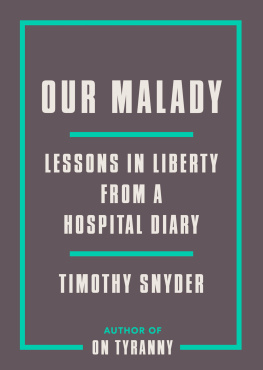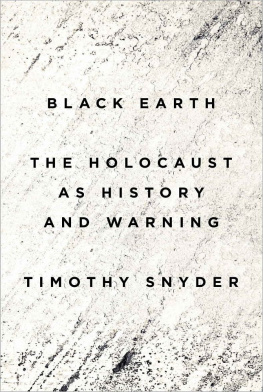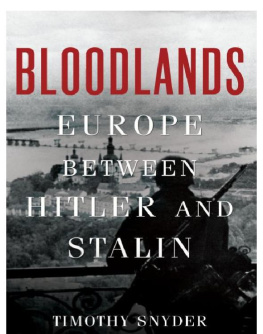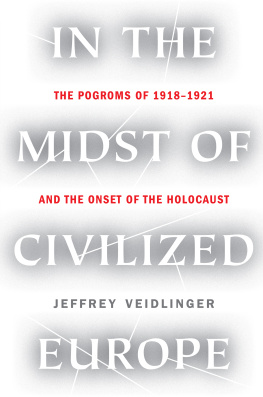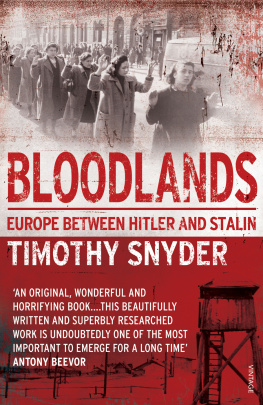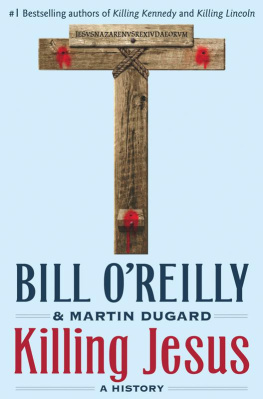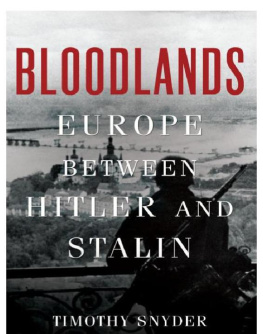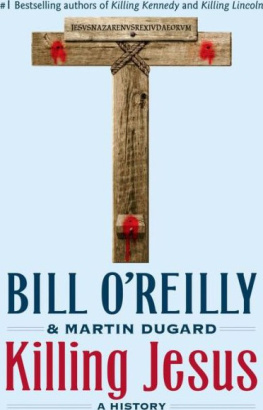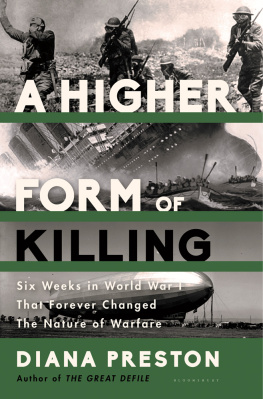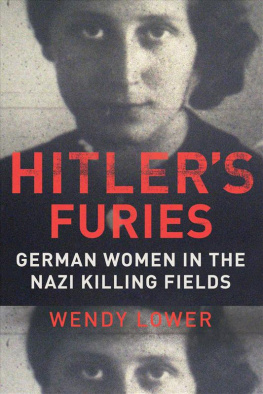Timothy Snyder - Bloodlands
Here you can read online Timothy Snyder - Bloodlands full text of the book (entire story) in english for free. Download pdf and epub, get meaning, cover and reviews about this ebook. City: New York, year: 2010, publisher: Basic Books, genre: Science. Description of the work, (preface) as well as reviews are available. Best literature library LitArk.com created for fans of good reading and offers a wide selection of genres:
Romance novel
Science fiction
Adventure
Detective
Science
History
Home and family
Prose
Art
Politics
Computer
Non-fiction
Religion
Business
Children
Humor
Choose a favorite category and find really read worthwhile books. Enjoy immersion in the world of imagination, feel the emotions of the characters or learn something new for yourself, make an fascinating discovery.
- Book:Bloodlands
- Author:
- Publisher:Basic Books
- Genre:
- Year:2010
- City:New York
- ISBN:978-0-465-02290-8
- Rating:5 / 5
- Favourites:Add to favourites
- Your mark:
- 100
- 1
- 2
- 3
- 4
- 5
Bloodlands: summary, description and annotation
We offer to read an annotation, description, summary or preface (depends on what the author of the book "Bloodlands" wrote himself). If you haven't found the necessary information about the book — write in the comments, we will try to find it.
Bloodlands — read online for free the complete book (whole text) full work
Below is the text of the book, divided by pages. System saving the place of the last page read, allows you to conveniently read the book "Bloodlands" online for free, without having to search again every time where you left off. Put a bookmark, and you can go to the page where you finished reading at any time.
Font size:
Interval:
Bookmark:
Timothy Snyder
BLOODLANDS
Europe Between Hitler and Stalin
your golden hair Margarete
your ashen hair Shulamit
Everything flows, everything changes. You cant board the same prison train twice.
Vasily GrossmanEverything FlowsA stranger drowned on the Black Sea alone
With no one to hear his prayers for forgiveness.
Whole cities disappear. In natures stead
Only a white shield to counter nonexistence.

PREFACE
Europe
Now we will live! This is what the hungry little boy liked to say, as he toddled along the quiet roadside, or through the empty fields. But the food that he saw was only in his imagination. The wheat had all been taken away, in a heartless campaign of requisitions that began Europes era of mass killing. It was 1933, and Joseph Stalin was deliberately starving Soviet Ukraine. The little boy died, as did more than three million other people. I will meet her, said a young Soviet man of his wife, under the ground. He was right; he was shot after she was, and they were buried among the seven hundred thousand victims of Stalins Great Terror of 1937 and 1938. They asked for my wedding ring, which I. The Polish officer broke off his diary just before he was executed by the Soviet secret police in 1940. He was one of about two hundred thousand Polish citizens shot by the Soviets or the Germans at the beginning of the Second World War, while Nazi Germany and the Soviet Union jointly occupied his country. Late in 1941, an eleven-year-old Russian girl in Leningrad finished her own humble diary: Only Tania is left. Adolf Hitler had betrayed Stalin, her city was under siege by the Germans, and her family were among the four million Soviet citizens the Germans starved to death. The following summer, a twelve-year-old Jewish girl in Belarus wrote a last letter to her father: I am saying good-bye to you before I die. I am so afraid of this death because they throw small children into the mass graves alive. She was among the more than five million Jews gassed or shot by the Germans.
* * *In the middle of Europe in the middle of the twentieth century, the Nazi and Soviet regimes murdered some fourteen million people. The place where all of the victims died, the bloodlands, extends from central Poland to western Russia, through Ukraine, Belarus, and the Baltic States. During the consolidation of National Socialism and Stalinism (19331938), the joint German-Soviet occupation of Poland (19391941), and then the German-Soviet war (19411945), mass violence of a sort never before seen in history was visited upon this region. The victims were chiefly Jews, Belarusians, Ukrainians, Poles, Russians, and Balts, the peoples native to these lands. The fourteen million were murdered over the course of only twelve years, between 1933 and 1945, while both Hitler and Stalin were in power. Though their homelands became battlefields midway through this period, these people were all victims of murderous policy rather than casualties of war. The Second World War was the most lethal conflict in history, and about half of the soldiers who perished on all of its battlefields all the world over died here, in this same region, in the bloodlands. Yet not a single one of the fourteen million murdered was a soldier on active duty. Most were women, children, and the aged; none were bearing weapons; many had been stripped of their possessions, including their clothes.
Auschwitz is the most familiar killing site of the bloodlands. Today Auschwitz stands for the Holocaust, and the Holocaust for the evil of a century. Yet the people registered as laborers at Auschwitz had a chance of surviving: thanks to the memoirs and novels written by survivors, its name is known. Far more Jews, most of them Polish Jews, were gassed in other German death factories where almost everyone died, and whose names are less often recalled: Treblinka, Chemno, Sobibr, Beec. Still more Jews, Polish or Soviet or Baltic Jews, were shot over ditches and pits. Most of these Jews died near where they had lived, in occupied Poland, Lithuania, Latvia, Soviet Ukraine, and Soviet Belarus. The Germans brought Jews from elsewhere to the bloodlands to be killed. Jews arrived by train to Auschwitz from Hungary, Czechoslovakia, France, the Netherlands, Greece, Belgium, Yugoslavia, Italy, and Norway. German Jews were deported to the cities of the bloodlands, to d or Kaunas or Minsk or Warsaw, before being shot or gassed. The people who lived on the block where I am writing now, in the ninth district of Vienna, were deported to Auschwitz, Sobibr, Treblinka, and Riga: all in the bloodlands.
The German mass murder of Jews took place in occupied Poland, Lithuania, Latvia, and the Soviet Union, not in Germany itself. Hitler was an anti-Semitic politician in a country with a small Jewish community. Jews were fewer than one percent of the German population when Hitler became chancellor in 1933, about one quarter of one percent by the beginning of the Second World War. During the first six years of Hitlers rule, German Jews were allowed (in humiliating and impoverishing circumstances) to emigrate. Most of the German Jews who saw Hitler win elections in 1933 died of natural causes. The murder of 165,000 German Jews was a ghastly crime in and of itself, but only a very small part of the tragedy of European Jews: fewer than three percent of the deaths of the Holocaust. Only when Nazi Germany invaded Poland in 1939 and the Soviet Union in 1941 did Hitlers visions of the elimination of Jews from Europe intersect with the two most significant populations of European Jews. His ambition to eliminate the Jews of Europe could be realized only in the parts of Europe where Jews lived.

The Holocaust overshadows German plans that envisioned even more killing. Hitler wanted not only to eradicate the Jews; he wanted also to destroy Poland and the Soviet Union as states, exterminate their ruling classes, and kill tens of millions of Slavs (Russians, Ukrainians, Belarusians, Poles). If the German war against the USSR had gone as planned, thirty million civilians would have been starved in its first winter, and tens of millions more expelled, killed, assimilated, or enslaved thereafter. Though these plans were never realized, they supplied the moral premises of German occupation policy in the East. The Germans murdered about as many non-Jews as Jews during the war, chiefly by starving Soviet prisoners of war (more than three million) and residents of besieged cities (more than a million) or by shooting civilians in reprisals (the better part of a million, chiefly Belarusians and Poles).
The Soviet Union defeated Nazi Germany on the eastern front in the Second World War, thereby earning Stalin the gratitude of millions and a crucial part in the establishment of the postwar order in Europe. Yet Stalins own record of mass murder was almost as imposing as Hitlers. Indeed, in times of peace it was far worse. In the name of defending and modernizing the Soviet Union, Stalin oversaw the starvation of millions and the shooting of three quarters of a million people in the 1930s. Stalin killed his own citizens no less efficiently than Hitler killed the citizens of other countries. Of the fourteen million people deliberately murdered in the bloodlands between 1933 and 1945, a third belong in the Soviet account.
This is a history of political mass murder. The fourteen million were all victims of a Soviet or Nazi killing policy, often of an interaction between the Soviet Union and Nazi Germany, but never casualties of the war between them. A quarter of them were killed before the Second World War even began. A further two hundred thousand died between 1939 and 1941, while Nazi Germany and the Soviet Union were remaking Europe as
Font size:
Interval:
Bookmark:
Similar books «Bloodlands»
Look at similar books to Bloodlands. We have selected literature similar in name and meaning in the hope of providing readers with more options to find new, interesting, not yet read works.
Discussion, reviews of the book Bloodlands and just readers' own opinions. Leave your comments, write what you think about the work, its meaning or the main characters. Specify what exactly you liked and what you didn't like, and why you think so.


